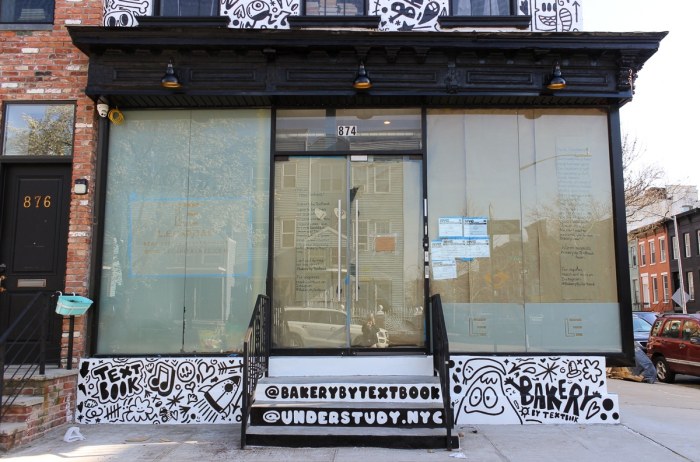Gerald Perrin has lived in the old Phipps Garden Apartments in Sunnyside for all of his 82 years.
He says his parents were among the original renters in the elegant brick complex constructed in 1931 by Henry Phipps, a steel magnate dedicated to providing “tenements or other housing accommodations for the working classes,” according to a notice at the time in The Architectural Forum.
The apartments ended up housing a more affluent, white-collar set than Phipps’ buildings in other areas, but today they’re a relatively affordable idyll within a neighborhood where the loudest noise a passerby hears is often the chirping of birds echoing down from the canopy of trees.
But now, there are no philanthropists endowing housing and the city isn’t getting any less expensive. Instead, we have Mayor Bill de Blasio’s signature rezoning initiatives, meant to extract affordable housing units from developers in exchange for compromises concerning issues like height and density.
In Sunnyside, the company that manages Phipps’ legacy is hoping to take advantage of that rezoning, with plans to build affordable housing for a new generation right across the street from the historic development. Yet some residents including Perrin are vocally standing in the way, as is the council member for the area, Jimmy Van Bramer.
Neighbors who want to keep things the way they are
For Perrin, Sunnyside and the Phipps Garden complex are areas worth preserving, not changing.
It’s not hard to see why when you visit the neighborhood. On a tour around the complex Tuesday, Perrin pointed out the decorative brick facades and grassy, shaded courtyards, originally planted with a diverse set of trees, including six full grown elms added as “a show of generosity from the Phipps family,” according to the city report designating the neighborhood a historical district.
As picturesque as the complex seems, Perrin sees signs of neglect: benches that were removed, sparser grass, even trees that have now been allowed to spread a leafy shade around the courtyards. In an earlier era, they’d been severely pruned. (Adam Weinstein, president and chief executive of Phipps Houses, says other residents enjoy the shade).
Perrin points to harsher changes should the new project become a reality. That building, which may rise to 10 stories in the center and shorter on the edges, would be taller than surrounding buildings’ four or six, and would be built on a parking lot which now hosts more than 200 spots.
The loss of parking is cited by Perrin and others surveyed on Tuesday as a prime concern about the project. Though the 7 train is a few blocks from the complex and a 30-minute ride to Times Square, many in the neighborhood own cars. The developers are planning a replacement lot, though that would have to accommodate new residents too.
Standing in the middle of the parking lot which affords a storybook view of midtown, Perrin points out all the downsides for the location and the project — the already-crowded schools, the thin street where cars now park on what should be the sidewalk, the fact that apartments in Phipps Garden are slowly emerging from some form of rent control themselves (14 out of 472 so far, says the developer). Perrin would rather focus on affordability and preservation in the cool greenery of the courtyards as opposed to something new.
This isn’t the first time that Sunnyside has been at the center of pivot moments in city planning.
The neighborhood was the first American version of the “garden city,” English reformer Ebenezer Howard’s concept of a planned community providing residents with everything they need — green space, cultural institutions, jobs, and housing — in a defined area. It was a city without slums or smoke, a reaction to industrial revolution-era urban centers.
New York City has a different problem these days — you have to be wealthy to lock down a spot.
Is this the fate of all affordable housing projects?
The de Blasio rezoning initiative has problems, including the concern that it doesn’t always go affordable enough.
It’s likely we’ll have to have this argument over and over again for each new proposal. The administration should push developers to go as affordable as possible — the developer in this case says they’re open to negotiate.
But some density and inconveniences over parking are going to be necessary in some areas to get the kind of affordability that other generations received.
Even Perrin admits that it’s an almost impossible problem — finding space in a city bound by water, during a time when a family can’t survive comfortably on a single salary, as he said his did.
De Blasio’s citywide rezoning initiatives were meant to address this. But now each individual rezoning project also will need City City council approval.
As the council traditionally sides with the local member on zoning issues like these, Van Bramer’s opposition could mean another defeat for de Blasio’s attempt at more affordability in practice.
This fight between change vs. status quo, communal vs. individual good, is nothing new, even in Sunnyside.
Just outside the apartment complex is a row of two-story houses that were designed to have long, communal rows of greenery. In the 1960s, the regulations governing those lush green plots expired, and many residents began to claim what had been used as communal land for themselves as small backyards or decks.
Soon, fences went up and much of the open space disappeared.

















